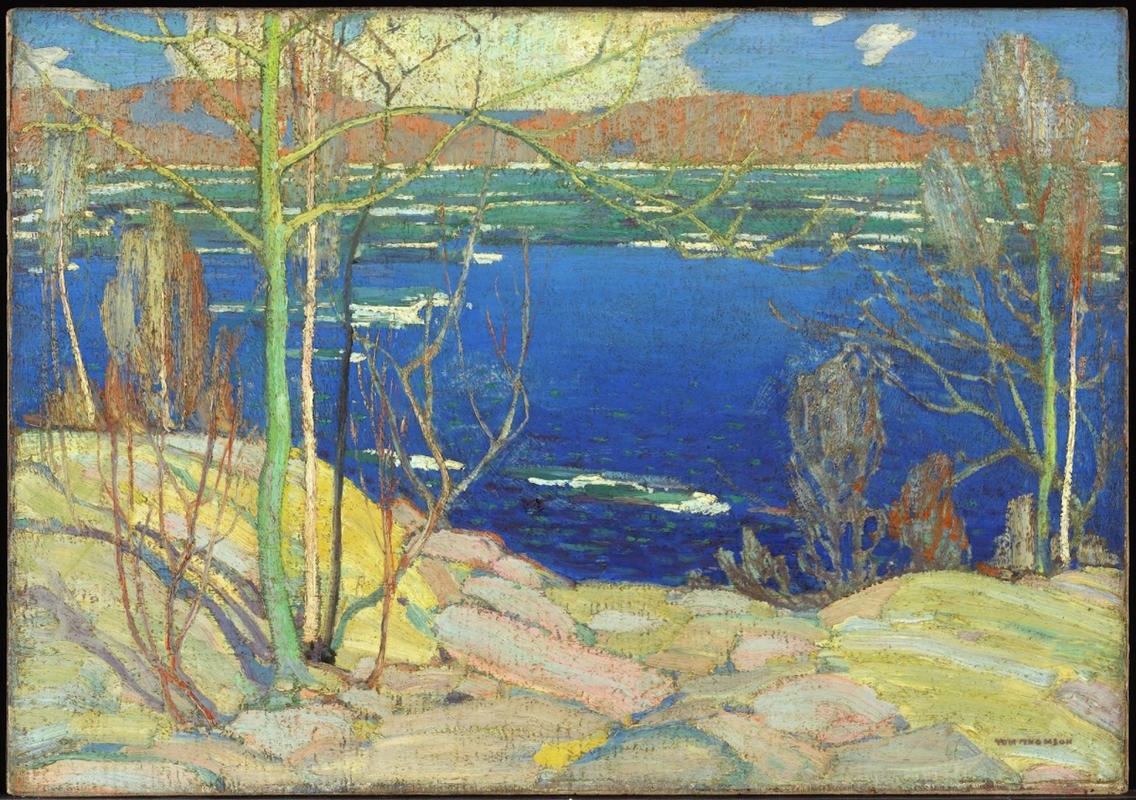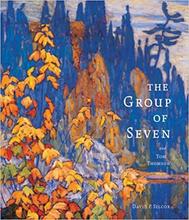More about Spring Ice
- All
- Info
- Shop

Contributor
Winter is over. Ned Stark’s never going to admit it, but Tom Thomson saw it happen.
He may not have been in Winterfell, but Algonquin Park in Ontario was as good a place as any to watch the seasons pass. Thomson was watching Canoe Lake change in the winter of 1915. Spring ice was floating on the lake. Winter was done.
Thomson moved to this neck of the Canadian woods in 1914 and spent half of his somewhat short artistic career here. Some of his most iconic paintings were inspired by the nature around him. Thomson made a smaller study of this landscape on a cardboard panel before he painted this one on canvas.
Thomson’s landscapes became a part of the national narrative. In 2018, Spring Ice was featured on 8,500 $20 fine silver coins. The Royal Canadian Mint was feeling generous when they gifted the coin to the Tom Thomson Art Gallery. He was a national icon, and Canada was very proud of him. He did effectively help start the first modern art movement in Canada. Members of the "Group of Seven" art crew were often invited up to Canoe Lake to paint with Thomson. He had this sweet gig up in the mountains, and he enjoyed sharing it with people. He wasn’t the father of Impressionism, but he did get the party started in Canada.
By 1913, the National Gallery of Canada was interested in picking up what Thomson was putting down. They were buying his paintings and storing them as national treasures. Spring Ice set them back about $300 CAD. Remember when you just started looking for jobs and all you found were unpaid internships that would pay you in "exposure"? Was the Gallery doing something similar to Thomson? Well, when adjusted for inflation, the painting would have cost them $6,725 CAD in 2019. Not too shabby.
Sources
- “Tom Thomson - Iconic Canadian Painter - The Art History Archive.” The Art History Archive. Accessed November 1, 2019. http://www.arthistoryarchive.com/arthistory/canadian/Tom-Thomson.html.
- jonathan5485, Author. “Spring Ice by Tom Thomson.” my daily art display, December 7, 2011. https://mydailyartdisplay.wordpress.com/2011/12/07/spring-ice-by-tom-th….
- Mint, Royal Canadian. “Royal Canadian Mint Presents ‘Spring Ice’ Silver Coin to Tom Thomson Art Gallery.” CoinWeek, January 22, 2016. https://coinweek.com/world-coins/royal-canadian-mint-presents-spring-ic….
- Benton, Susan. “Tom Thomson: 1877-1917.” Daily Art Fixx, August 5, 2016. https://dailyartfixx.com/2016/08/05/tom-thomson/.
Featured Content
Here is what Wikipedia says about Spring Ice
Spring Ice is a 1915–16 oil painting by Canadian painter Tom Thomson. The work was inspired by a sketch completed on Canoe Lake in Algonquin Park. The completed canvas is large, measuring 72.0 cm × 102.3 cm (28.3 in × 40.3 in). Painted over the winter of 1915–16, it was completed in Thomson's shack behind the Studio Building in Toronto. The painting was produced as he was in the peak of his short art career and is considered one of his most notable works. While exhibited in a show put on by the Ontario Society of Artists, the work received mixed to positive reviews. In 1916 it was purchased by the National Gallery of Canada in Ottawa and has remained in the collection ever since.
Check out the full Wikipedia article about Spring Ice













